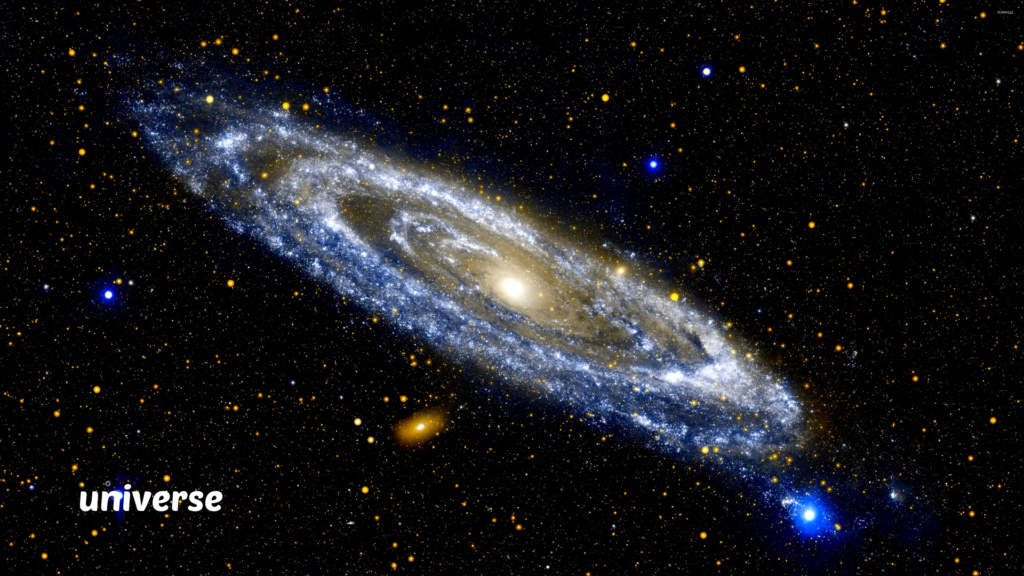Table of Contents
ToggleNGC 6744 Galaxy Image: A Stunning View of Our Galactic Twin
Explore the breathtaking NGC 6744 Galaxy Image, a detailed photograph of the spiral galaxy NGC 6744, which resembles our Milky Way. Discover why this image is so special and how it helps scientists understand our own galaxy.

© Dark Energy Survey/DOE/FNAL/DECam/CTIO/NOIRLab/NSF/AURA, Image processing: R. Colombari & M. Zamani (NSF NOIRLab)
NGC 6744 Galaxy Image: An Incredible Discovery
The NGC 6744 Galaxy Image recently shared with the world offers an extraordinary glimpse into a galaxy strikingly similar to our Milky Way. This photograph, captured by the Dark Energy Camera (DECam) on the Víctor M. Blanco 4-meter Telescope at Cerro Tololo Inter-American Observatory in Chile, provides one of the most detailed views of NGC 6744 ever taken. Let’s dive into why this image is so remarkable and what it tells us about our galaxy.
Why NGC 6744 Matters
The NGC 6744 Galaxy Image is not just a beautiful picture; it’s a vital tool for understanding our own galaxy. Because we are embedded within the Milky Way, capturing an image from an external viewpoint is impossible. To get a sense of what the Milky Way looks like from the outside, astronomers study other spiral galaxies like NGC 6744.
NGC 6744, located about 30 million light-years away in the constellation Pavo, is an excellent stand-in for the Milky Way. With its spiral arms extending 175,000 light-years, it’s actually larger than our Milky Way, which spans roughly 100,000 light-years. By studying NGC 6744, scientists gain insights into the structure and evolution of spiral galaxies, including our own.
A Closer Look at the NGC 6744 Galaxy Image
The NGC 6744 Galaxy Image reveals a stunning view of this spiral galaxy. The bright nucleus of NGC 6744 stands out prominently, surrounded by intricate lanes of dust. These dust lanes are crucial as they fuel the formation of new stars. The image also highlights a faint arm on the left side of the galaxy, which is not commonly visible in other photographs. Additionally, the lower right of the image features NGC 6744A, a faint companion galaxy at the end of one of NGC 6744’s spiral arms.
This detailed image was made possible by DECam, which is part of the National Science Foundation’s NOIRLab program. DECam is known for its ability to capture high-resolution images and is used to create the most extensive 3D map of the night sky ever attempted. The photograph of NGC 6744 is a testament to the remarkable capabilities of this camera.
The Role of DECam and Cerro Tololo Observatory
The NGC 6744 Galaxy Image was taken at the Cerro Tololo Inter-American Observatory, a renowned facility located in Chile. Cerro Tololo is also home to the Vera C. Rubin Observatory, which will soon be equipped with the largest camera ever built. Starting in 2025, this observatory will conduct the Legacy Survey of Space and Time (LSST), capturing images of the entire Southern Hemisphere’s night sky
every three nights. This ambitious project aims to identify and track various celestial phenomena, including supernovae, comets, and asteroids. The data gathered will greatly enhance our understanding of the universe and the dynamics of different types of galaxies.
The Significance of Spiral Galaxies
The NGC 6744 Galaxy Image is significant not just for its beauty but also for its role in astronomy. About 60% of all galaxies are spiral galaxies, making them the most common type in the universe. NGC 6744 serves as an archetype for spiral galaxies, providing a clear example of what many other spiral galaxies, including the Milky Way, might look like.
Studying galaxies like NGC 6744 helps astronomers understand more about galaxy formation, evolution, and the processes that drive star formation. By comparing the structure and features of NGC 6744 with those of the Milky Way, scientists can gain valuable insights into how our galaxy has developed over billions of years.
Future Prospects and Ongoing Research
The NGC 6744 Galaxy Image is just one example of the many exciting discoveries that are possible with advanced astronomical tools. As technology continues to improve, we can expect even more detailed and comprehensive images of distant galaxies. The upcoming projects at the Vera C. Rubin Observatory will further expand our knowledge and provide new opportunities for research.
In the future, astronomers will be able to study even more galaxies in greater detail, uncovering secrets about the universe’s past and future. Each new image and piece of data contributes to a larger understanding of our cosmic neighborhood and our place within it.
Conclusion
The NGC 6744 Galaxy Image is a remarkable achievement that offers a window into a galaxy much like our own Milky Way. It not only captures the beauty of NGC 6744 but also provides valuable information that helps scientists learn more about spiral galaxies and the Milky Way itself. As we continue to explore the universe, images like these remind us of the vastness and complexity of the cosmos and our ongoing quest to understand it.
By studying galaxies like NGC 6744, astronomers are able to piece together the puzzle of our universe, helping us gain a deeper appreciation for the beauty and scale of the galaxies that surround us.
Related:
“Venus Geological Features: 5 Astonishing Discoveries That Will Blow Your Mind”